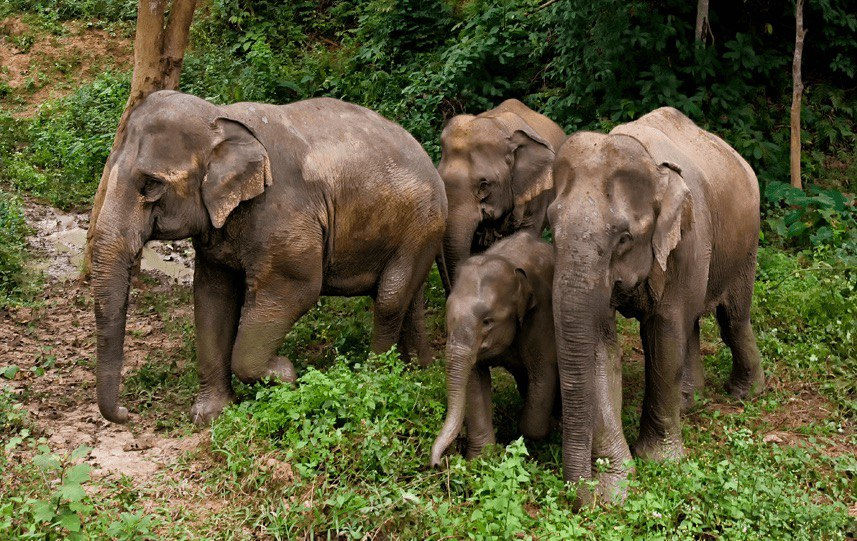Explore the Wild Side of Laos
- charlene929
- Jun 29, 2020
- 3 min read
Updated: Aug 31, 2020

LAOS is mostly known for the quiet UNESCO Heritage town Luang Prabang, with its glittering temples, caves filled with Buddha statues, monasteries and saffron clad monks. Beautiful and serene, it is a delightfully captivating place to begin exploring this little-known country. Small, land-locked and mountainous, Laos is traversed by the mighty Mekong River, and you can arrive via riverboat from northern Thailand’s golden triangle, or fly in directly to Luang Prabang. But Laos is far from only about culture, it also offers unique wildlife and nature experiences.

A common itinerary in Luang Prabang will include the Kuang Si waterfalls with its vibrant blue water cascading through natural pools in the jungle, but let us take you a bit further - adding a visit to the Tat Kuang Si Bear Rescue Centre, part of the Luang Prabang Wildlife Sanctuary, for Sun-Bears and other rescued wildlife including leopard cats, birds, civets, even endangered red pandas, intercepted after being smuggled. With a Wildlife Hospital, a Cub nursery and Quarantine, they also release rehabilitated wildlife back to protected forest and have rescued over 950 of the world's most vulnerable bear species. Hear the moving rescue stories as well as what is done to protect them in the wild.


Huay Xai, a village on the banks of the Mekong, has always been a busy trading point not just for the ethnic hill tribes, known for their colourful textiles, but also for the historic trade route between Chiang Mai and Yunnan, China, laden with opium and tea. Instead of visiting the hill tribes, we suggest you reach out to your wild side and stay in a tree-house only accessible by zipline. The 1200 square km Bokeo Nature Reserve was created to protect its population of the black-cheeked gibbon, only re-discovered in 1997, previously thought to be extinct. It is a place of rare biodiversity with animals such as tigers, bears, elephants, monkeys. The Gibbon Experience is a eco-project committed to preserving this nature reserve and habitat, and by also creating jobs for the indigenous peoples, thereby avoiding poaching and damaging slash and burn agriculture. They have built sustainable tree-top houses for up to 24 visitors at a time, where experience options feature overnight stays in the treehouses with zip-lining across valleys and jungle canopies, the longest being 600 metres and about 150 metres high. The views from these heights above a jungle are unparalleled and gives a fantastic perspective.
Laos was once known as the Land of a Million Elephants, although today their numbers have dwindled into the hundreds, with more elephants used in logging than found in the wild. Since 2001, the award winning team of the Elephant Conservation Center has been pivotal in the protection of Laos’ most iconic animal. With the vision of “Offering Mahouts & Elephants a New Life” - it works on the preservation of the Lao elephant population, both wild and those under human care, rescuing captive, wounded, sick or old elephants. Created in the natural habitat of the Asian elephant, on the shores of Nam Tien lake, Sayaboury, and surrounded by 6000 hectares of tropical forest, the elephants can recreate an environment where a social group can be formed and natural behaviour relearned. The ultimate goal of the Center is to release elephants back to Nam Pouy National Protected Area which is still a biodiversity hotspot where a wild elephant population still roams free.
The best way to experience these gentle giants is by an overnight stay in the reserve in a bamboo bungalow by the lake surrounded by untouched tropical forest. It has a total of 17 rooms across 2 categories, 13 bamboo bungalows with communal restrooms & showers, and 4 rooms at the Rosewood lodge with private bathrooms. You will receive expert information about the condition of the Asian elephant, its biology, cultural importance and the challenges of the species’ conservation and have the opportunity to interact with the elephant herd in its natural habitat.
It's also possible to visit it as a day trip, starting from Luang Prabang at 06:30 am, with breakfast at the ECC. Enjoy a meeting with a senior conservationist, observation of the herds in the socialization area, a visit to the nursery with mothers and babies, and the elephant hospital, returning to Luang Prabang just before dinner.
Come with 8th Wave and explore this fascinating, beautiful and unique destination with us. Check us out or get in touch with our team!



















Comments